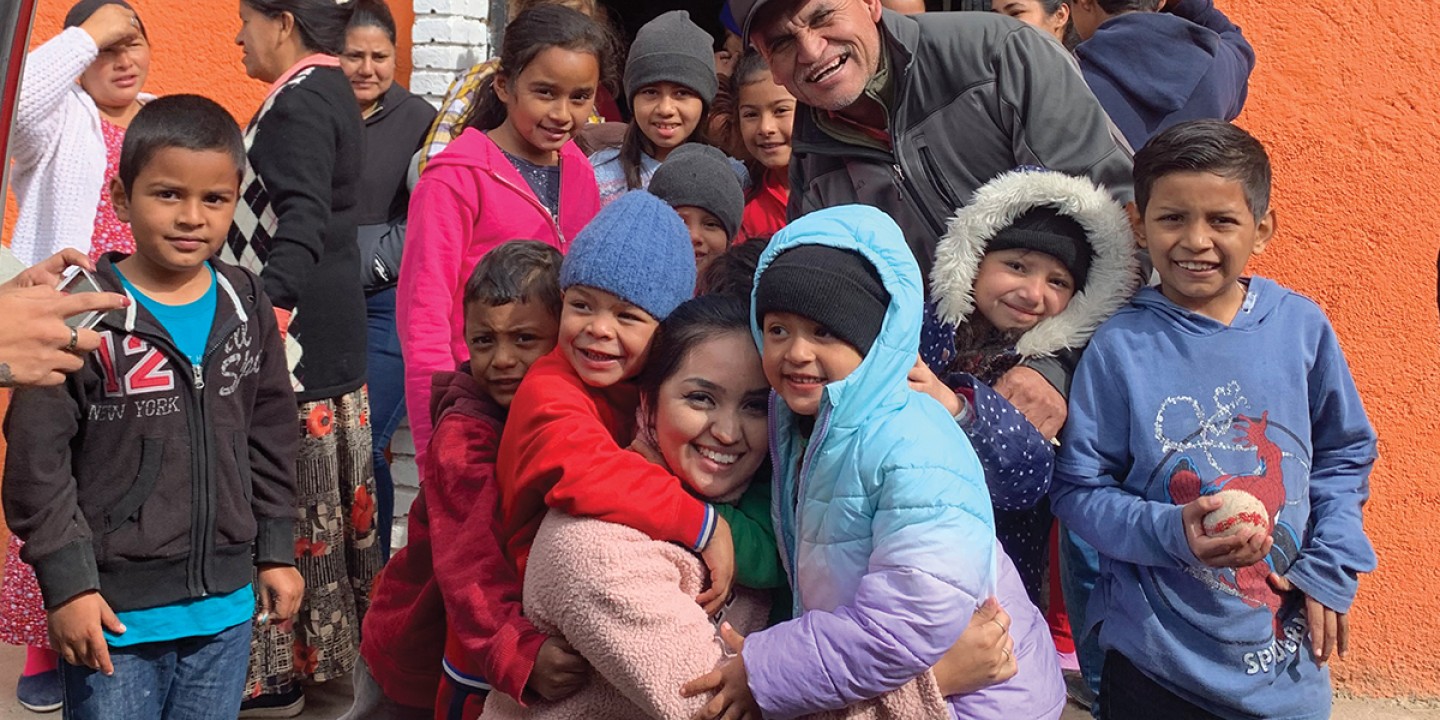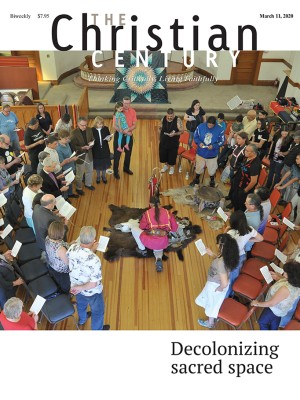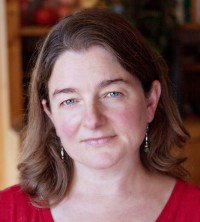What an open door to asylum seekers looks like
A Laredo pastor and his family are hard at work helping others, on both sides of the border.

In the spring of 2019, Lorenzo Ortiz was the pastor of Iglesia Bautista Emanuel in Laredo, Texas, a city on the border with Mexico. While there have always been migrants in Laredo, and Ortiz had worked with migrants in one way or another since 2017, he now noticed a sudden escalation in people from Central America crossing the US border into Laredo seeking asylum, the largest numbers seen since 2006. Feeling the desperation of their need, Ortiz began to invite them to stay at the church.
Before long, Ortiz’s daughter, Ruth, tells me, their numbers had swelled into the hundreds. There were people sleeping behind the altar and under the pews. There were Central Americans, Africans, Haitians, Brazilians, and Cubans. When people in the church objected to having the church completely taken over, Ortiz invited the asylum seekers to his home. This was the beginning of El Buen Samaritano Migrante, an ad hoc, ever evolving ministry that has now ventured into the dangerous, cartel-ridden territory on the Mexican side of the border.
Read our latest issue or browse back issues.
All through the hot summer of 2019, the Ortiz family hosted as many as 140 migrants at a time from all parts of the globe in their modest home. They set up tents and cots in the yard and every inch of the house. They had a small medical station, and they helped people make calls to relatives and buy bus tickets. Eventually, they chartered buses and sent one bus in the direction of California and another in the direction of New York, dropping people off at destinations all along the way.
Then, quite suddenly, the flow of migrants stopped. The yard emptied. Where had all the people gone? It was not long before Ortiz realized that they were in tent cities along the border, where they lacked running water, bathrooms, or beds, in places rife with danger and violence. They had been stopped there by new Trump administration policies that were preventing people from seeking asylum.
Ortiz began to cross the border himself to see what he could do to help. He saw the need for safe places for people to wait while they applied for asylum in the United States, so he opened four houses for refugees in northern Mexico. Every day he drives a church van across the border with supplies and takes people from the checkpoints to the houses and back again in accordance with their appointments with US authorities.
One day in January, Ortiz drove the van across the border as usual and picked up people at the US checkpoint to take them to the houses. Just a few yards from the US border patrol station, four cars suddenly surrounded the vehicle. Men with guns ordered everyone out of the van. Ortiz came to understand that they wanted to kidnap new arrivals, because new arrivals can be extorted in a way that people who have been waiting a long time cannot. They wanted either to hold them hostage so that their relatives in the United States might pay for their release or to convince them to pay to be smuggled over the border illegally.
Ortiz managed to convince the men that all the people in his van already had appointments with the US government and had neither the interest nor the resources for a smuggled crossing. For the time being, everyone was returned to the van safely.
Back in the Ortiz family’s dining room, Ruth tells this story and the stories of people they have met.
A family from Congo: the dad was a professor; the mom was a nurse. He got into a conflict with a prominent family whose daughter had been in his class at the university. Thugs from the family began to harass him. Then one day they came to his house while he was at work. They killed his two sons and raped his wife and two daughters. He came home to a broken family. They ran. They somehow got to a ship, gave all their money to smugglers, and got to the coast of the Americas after three weeks. They gradually worked their way up to the US border doing odd jobs. At the US border they passed their credible fear interview, but they were held back because they did not have an address in the US where they were going. Eventually, the professor convinced the border patrol to let him in anyway. He ended up in Ortiz’s yard. Then he found a friend of a friend in New York who agreed to take the family in. The Ortiz family helped them get on a bus.
A young Honduran man arrived. He was 18 years old when his young wife died giving birth to twin girls. His mother is in the US, and he decided he had to reach her. He crossed with the two daughters, under six months old. He carried one across the river and his primo—a cousin or friend—carried the other. They ended up in Ortiz’s yard.
Stories like these multiply daily. The Ortiz family’s work is being done chaotically, minute by minute. They respond as quickly as they can to basic needs amidst severe threats, as if they were in a war zone. In the midst of this activity, there has been little time to think. Ortiz, his wife, Oralia, and their daughter, Ruth, simply have given themselves over to meeting the stranger and seeing what, if anything, they can do to help.
Volunteers from the Interfaith Welcome Coalition in San Antonio have come to help them. People donate food, clothing, blankets, toiletries. A Catholic sister named Denise LaRock crosses the border with Ortiz every Wednesday, bringing what resources she has. Oralia tells me, “The work is dangerous, but he is happy.” And then, as if I might misunderstand, she reverses the order: “He is happy, but the work is dangerous.”
When I observed what the Ortiz family is doing, I thought of another moment in history when desperation came to the doorstep and people had to decide how to respond. In the winter of 1940, a starved and frightened woman knocked on the door of the presbytery in Le Chambon, France, and explained her plight to Magda Trocmé, who answered the door. The woman was a German Jew, and she was in danger. Trocmé did what she would do thousands of times from that moment forward. She said, “Naturally, come in. Come in.”
Thus began a movement that was rooted in the simple welcome of people fleeing danger. While Trocmé, her husband, and the many others who worked to save Jewish people fleeing the Holocaust could not stop the immense atrocity that was unfolding in Europe, their actions remain an emblem of real help in a landscape of disaster.
Historian Philip Hallie, who researched the people of Le Chambon and their courageous choices, was struck by the way that action took precedence over all else when they saw suffering. They did not theorize about it. They “treated human life as something beyond all price.”
At the end of his book Lest Innocent Blood Be Shed, Hallie writes:
I, who share Trocmé’s and the Chambonnais’ beliefs in the preciousness of human life, may never have the moral strength to be like [them]; but I know what I want to have the power to be. I know that I want to have a door in the depths of my being, a door that is not locked against the faces of all other human beings. I know that I want to be able to say, from those depths, “Naturally, come in, and come in.”
What would it take to confront today’s crisis at our doorstep with the Trocmés’ and the Ortiz family’s sense of hospitality and urgency? What would it take to put the preciousness of human life above all argument? What would it take to find that door in ourselves?
A version of this article appears in the print edition under the title “Urgent welcome.”







